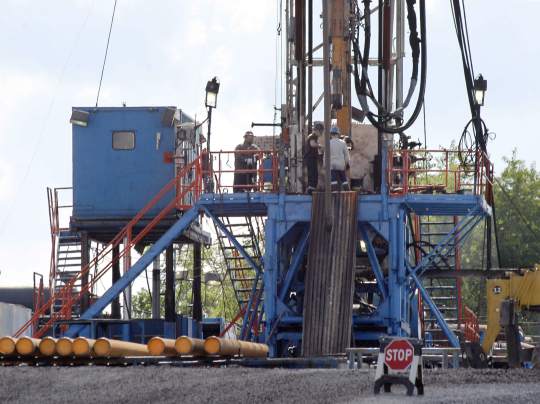Shale gas will continue changing world energy outlook
Post Date: 19 Mar 2014 Viewed: 333

The shale gas revolution, which alhas ready transformed the United States and Louisiana into manufacturing powers, will vastly alter the world’s energy landscape by 2035, a BP executive said Tuesday.
Shale production will help make the United States a net exporter of natural gas in 2018, with exports growing to 10.6 billion cubic feet per day by 2035, said Mark Finley, general manager, global energy markets and U.S. economics, for BP.
Increases in U.S. oil production the past two years were among the largest in history. “The numbers here are staggering,” Finley said.
Last year’s increase was the fourth-largest ever worldwide. Only Saudi Arabia has ever increased production by more.
U.S. shale gas production will grow an average of 4.3 percent between 2012 and 2035, Finley said. U.S. gas production will increase by 45 percent overall during that period.
That production also will allow the U.S. to become a net exporter of liquefied natural gas in 2016.
“The arrival of U.S. LNG exports at scale has a profound impact on global LNG markets, contributing to a shake-up in the structure of LNG supplies,” Finley said.
By 2035, U.S. LNG net exports are expected to reach 11.2 billion cubic feet per day. By then the United States will have overtaken Qatar, now the world’s largest LNG exporter, and trail only Australia in terms of LNG exports.
Finley was one of the speakers at the Grow Louisiana Coalition “Energy Outlook 2035” forum, held at the LSU Center for Energy Studies. The coalition is one of the pro-oil-and-gas industry groups formed to promote the positive impacts of the energy industry on the state and its residents. The coalition has organized a series of meetings across the state to push that message.
In his presentation, Finley said the 2035 energy picture will be quite different than it is today.
Oil will supply most of North America’s transportation needs through 2035, but conventional vehicles will account for just 26 percent of total sales. Full hybrids will make up 24 percent of sales, with mild hybrids accounting for 38 percent of sales.
Plug-in vehicles, including full battery-electric automobiles, will make up 11 percent of sales.
Mild hybrids typically use electric motors as a power booster for an internal combustion engine. Full hybrids, like the Toyota Prius, typically use their electric motors the entire time the vehicle is running.
Fossil fuels will continue to dominate with 81 percent of the energy market, but for the first time since the Industrial Revolution, there will be no single dominant fuel.
Meanwhile, renewable energy, including biofuels, will grow from 2 percent to 7 percent, overtaking nuclear power by 2025 and equaling hydropower by 2035.
The United States will experience the largest non-OPEC oil supply increase at 3.6 million barrels per day. Canada will be second at 3.4 million barrels. Those gains will be largely driven by shale oil production.
By 2035, the United States will be importing less than 10 percent of its daily oil needs, or 1 million barrels of oil per day. In 2005, the U.S. imported more than 60 percent of its oil, or more than 12 million barrels per day.
China, which will pass the U.S. as the world’s largest importer in 2015, will be importing 14 million barrels of oil per day, or 75 percent of its supply.
Power generation will continue to consume much of the energy produced. In 1965, 30 percent of primary energy was converted to electricity; in 2012, 42 percent. In 2035, that will grow to 46 percent.
Coal will remain the largest source of power globally. But natural gas will be the major source of power in the Organisation for Economic Cooperation and Development Countries, the U.S., Canada and 18 European countries.



